David Benedikt Wirth
Temple
Nov 05, 2022–Nov 30, 2022
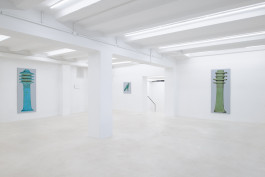
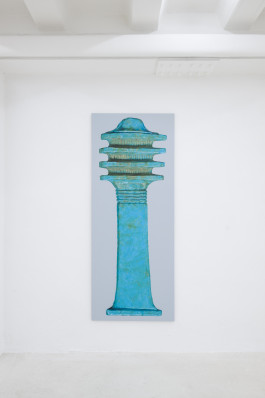
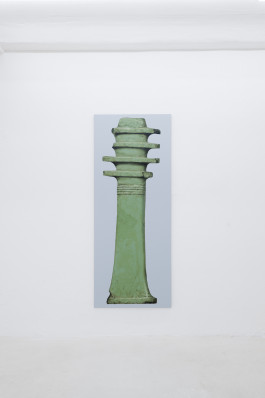
David Benedikt Wirth,
Djed A, 2022
David Benedikt Wirth,
Djed B, 2022
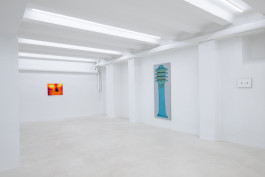
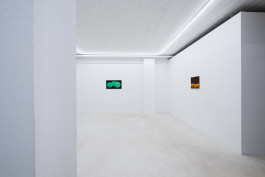
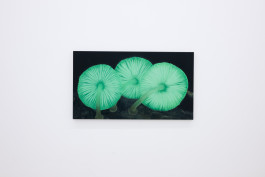
David Benedikt Wirth
Glow, 2022
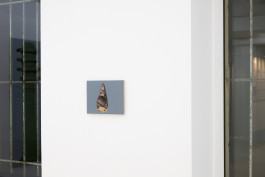
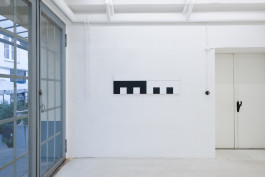
David Benedikt Wirth
scale, 2022
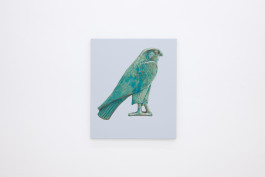
David Benedikt Wirth
Horus, 2022
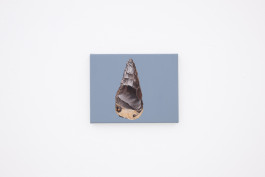
David Benedikt Wirth
homo, 2022
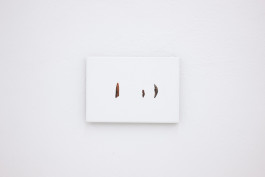
David Benedikt Wirth
homo, 2021
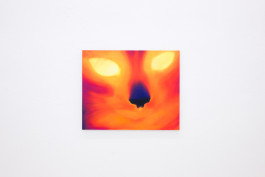
David Benedikt Wirth
predator, 2022
A talk between David Benedikt Wirth and Florian Meckbach
FM “Temple” at JVDW Gallery in Düsseldorf is your first solo gallery exhibition and you are showing, among other things, two-meter-high Djed pillars and a Horus falcon. Is this a nod to ancient Egyptian themes.
DBW At first glance, that is the case. However, antiquity is not the main theme. The objects symbolize a beginning, a primal ground or archetype, as the exhibition title “Temple” does not refer to religion per se. Rather, it describes a place where something gathers. For example, two meanings gather in the Djed pillar – the architectural part and the hieroglyph. In the latter, the branch is symbolized as an archetype. The importance of trees for humans as shelter or due to their physical characteristics as building materials has an inner relationship to the environment that has been given a certain expression over time.
FM I see. Then your work Glow disguises a type of framework that connects all works with each other – the pillar as a tree with the roots in the ground?
DBW More or less. Glow is a close-up of a bioluminescent fungus, Mycena chlorophos, which produces cold light intrinsically. For me, the relationship between humans and nature is crucial, intending to show humankind in its true light. Without techniques, man is quite a lost and needy creature – which means coexistence is fundamental.
FM This reminds me of a book by Humberto Maturana and Francisco Varela (The Tree of Knowledge: The Biological Roots of Human Understanding) and a quote in it: “All doing is knowing, and all knowing is doing.” I think there’s a crossover, that life is inevitably interdependent, in order to know yourself (autopoiesis).
DBW That’s how I understand it too. Although I have to object that it’s not mainly about knowledge – more about spirit. In my work, I try to capture a situation that cannot be equated with an insight. It is beyond our perception. It is a fascination we feel with our body, with the things in time.
FM Sounds like you’re in search of immediacy and indeterminacy.
DBW Mindsets or things are not limited. The work predator collects these considerations and examines the relationship between the hunter and the hunted: it reverses it by taking up the fragility of the cultural.
FM Totally. As our vision is predetermined and based on codes and habits. The work scale is particularly striking as a measurement of the world in the sense of a reference, of making things comprehensible.
DBW It is one of my concerns to make orders of scale or time visible. Because of its form and its materials, an oil painting is part of a historical tradition.
FM This leads me to your painting technique. In addition to the precise and naturalistic-realistic images, predator is completely different in the choice of color. Is there an explanation?
DBW The sensuality of the painting and its surface is very important to me, which is why the canvas should remain distinguishable. The same applies to the motifs that are displayed flat on the fabric surface. Regarding your question: predator depicts infrared photography which uses a specific color scale. Unlike the Djed columns or the Horus falcon, the approach to the subject’s presence here is technical-scientific. This brings me back to the starting point of my choice of motif, in which a moment with all its complexity holds me captive, its potential what I want to bring to focus.
FM I think complexity is not entirely visible, but it is the reason for the attraction to your works – you literally want to reach out for Horus; like the sensual is dragging you.
DBW The sensuality or liveliness is what impresses me the most. Both are connected to a complexity, which in turn forms a nexus to the hidden or repressed stories that I want to flush to the surface.
David Benedikt Wirth
Temple
Nov 05, 2022–Nov 30, 2022






David Benedikt Wirth
Horus, 2022

David Benedikt Wirth
Djed A, 2022

David Benedikt Wirth
Djed B, 2022

David Benedikt Wirth
scale, 2022

David Benedikt Wirth,
homo, 2022

David Benedikt Wirth,
homo, 2021
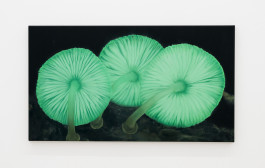
David Benedikt Wirth,
Glow, 2022

David Benedikt Wirth,
predator, 2022
A talk between David Benedikt Wirth and Florian Meckbach.
FM “Temple” at JVDW Gallery in Düsseldorf is your first solo gallery exhibition and you are showing, among other things, two-meter-high Djed pillars and a Horus falcon. Is this a nod to ancient Egyptian themes.
DBW At first glance, that is the case. However, antiquity is not the main theme. The objects symbolize a beginning, a primal ground or archetype, as the exhibition title “Temple” does not refer to religion per se. Rather, it describes a place where something gathers. For example, two meanings gather in the Djed pillar – the architectural part and the hieroglyph. In the latter, the branch is symbolized as an archetype. The importance of trees for humans as shelter or due to their physical characteristics as building materials has an inner relationship to the environment that has been given a certain expression over time.
FM I see. Then your work Glow disguises a type of framework that connects all works with each other – the pillar as a tree with the roots in the ground?
DBW More or less. Glow is a close-up of a bioluminescent fungus, Mycena chlorophos, which produces cold light intrinsically. For me, the relationship between humans and nature is crucial, intending to show humankind in its true light. Without techniques, man is quite a lost and needy creature – which means coexistence is fundamental.
FM This reminds me of a book by Humberto Maturana and Francisco Varela (The Tree of Knowledge: The Biological Roots of Human Understanding) and a quote in it: “All doing is knowing, and all knowing is doing.” I think there’s a crossover, that life is inevitably interdependent, in order to know yourself (autopoiesis).
DBW That’s how I understand it too. Although I have to object that it’s not mainly about knowledge – more about spirit. In my work, I try to capture a situation that cannot be equated with an insight. It is beyond our perception. It is a fascination we feel with our body, with the things in time.
FM Sounds like you’re in search of immediacy and indeterminacy.
DBW Mindsets or things are not limited. The work predator collects these considerations and examines the relationship between the hunter and the hunted: it reverses it by taking up the fragility of the cultural.
FM Totally. As our vision is predetermined and based on codes and habits. The work scale is particularly striking as a measurement of the world in the sense of a reference, of making things comprehensible.
DBW It is one of my concerns to make orders of scale or time visible. Because of its form and its materials, an oil painting is part of a historical tradition.
FM This leads me to your painting technique. In addition to the precise and naturalistic-realistic images, predator is completely different in the choice of color. Is there an explanation?
DBW The sensuality of the painting and its surface is very important to me, which is why the canvas should remain distinguishable. The same applies to the motifs that are displayed flat on the fabric surface. Regarding your question: predator depicts infrared photography which uses a specific color scale. Unlike the Djed columns or the Horus falcon, the approach to the subject’s presence here is technical-scientific. This brings me back to the starting point of my choice of motif, in which a moment with all its complexity holds me captive, its potential what I want to bring to focus.
FM I think complexity is not entirely visible, but it is the reason for the attraction to your works – you literally want to reach out for Horus; like the sensual is dragging you.
DBW The sensuality or liveliness is what impresses me the most. Both are connected to a complexity, which in turn forms a nexus to the hidden or repressed stories that I want to flush to the surface.
Get in contact or
book an appointment
Schirmerstrasse 61
Backyard
40211 Duesseldorf
Germany
Follow us on Instagram, or subscribe to our newsletter to receive invitations to upcoming exhibition openings and more information about featured artists.
Get in contact or
book an appointment
Schirmerstrasse 61
Backyard
40211 Duesseldorf
Germany
Follow us on Instagram, or subscribe to our newsletter to receive invitations to upcoming exhibition openings and more information about featured artists.